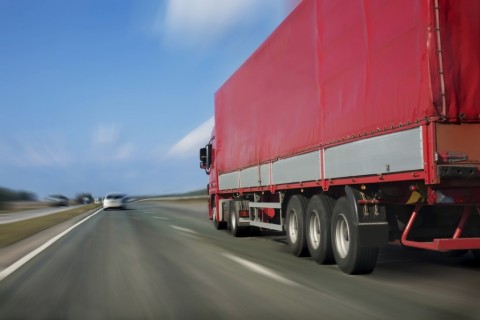When talking about exciting new advancements that are coming to the supply chain, the discussion will always usually end up focused around 3D printing. Rightly so, as the 3D printer has opened up new opportunities never before possible in the supply chain.
Rather than having to wait for a specialized part, companies can now print the part they need right on site. This can be a huge time and cost saver for companies involved in projects, but when looking at the overall supply chain worldwide, 3D printing is a pretty niche example.
Even with 3D printers popping up everywhere, changing the way companies rely on the supply chain, there will always be limitations. Sure, 3D printers might be able to print space habitats on Mars, but they can’t print everything and there will always be a need to transport an item(s) from one destination to another. 3D printing is revolutionary, but there is another absolute game changer about to deploy in the supply side that is an evolution; self-driving trucks.
When looking at the amount of freight moved just in America alone, there was 9.2 billion tons (primary shipment only) moved by truck representing 67% of the total tonnage moved in 2011. We’ve all heard about Google (to be correct, Alphabet since Google Inc re-organized itself into its new hierarchy structure) and Tesla in their efforts to create self-driving cars for the mass car buying public, but other companies, especially trucking companies, have not been standing idly by in this field either.
As reported by The Guardian a number of European truck manufactures recently collaborated on creating a convoy of more than six semi-autonomous (semi-autonomous because there was still a back-up human driver) trucks that drove from Sweden and south Germany to a port in Rotterdam, Netherlands. Although not ready for complete autonomous driving yet, we can certainly see in the very near future (2018?) a convoy of trucks, completely unmanned driving across the highways of the world.
The benefits to the supply chain are enormous. With no human drivers, these trucks will only ever need to stop for gas, there won’t be a need for bathroom breaks, eating and sleeping. An autonomous truck could be loaded in San Diego, California and drive to Halifax, Nova Scotia (5,800km) in 54 hours, only stopping for gas. With a human driver, that time is impossible if there is only one human driver as they will need sleep, food and bathroom breaks.
The leading cause of accidents with big trucks is drivers falling asleep at the wheel. With this gone, in theory, suppliers should see more of their products get to the client instead of in the ditch. One can certainly imagine the time and cost savings this would have to a shipping company. But the story doesn’t end there. Autonomous shipping is not just a huge deal for commercial shipping companies, it will also make a huge impact in military applications.
Napoleon famously stated that an army marches on its stomach and something that is often overlooked is the supply chain required to keep an army mobile. More challengingly, these supply lines will often have to transport supplies over very rough terrain (such as Afghanistan), minimal escort and protection (these trucks are very lightly armored (if at all) and devoid of all the creature comforts afforded to commercial trucks.
Autonomous trucks will be able to remove a huge burden from the military commanders, freeing up soldiers to perform more “soldierly” tasks. If you’ve finished your work for the day and have some free time, I’d recommend watching the following Top Gear clip of a race between a human and an autonomous military supply truck over some very rough terrain…





Leave a Reply